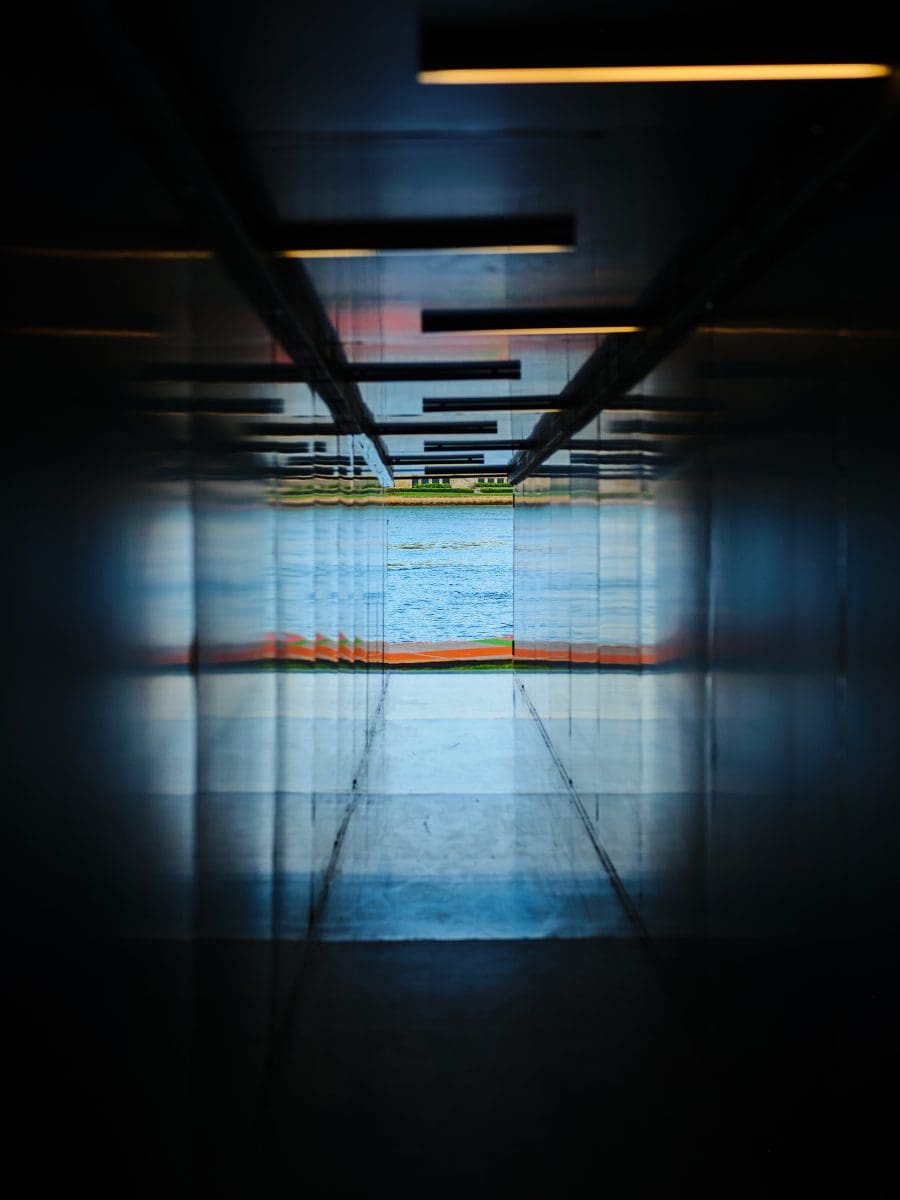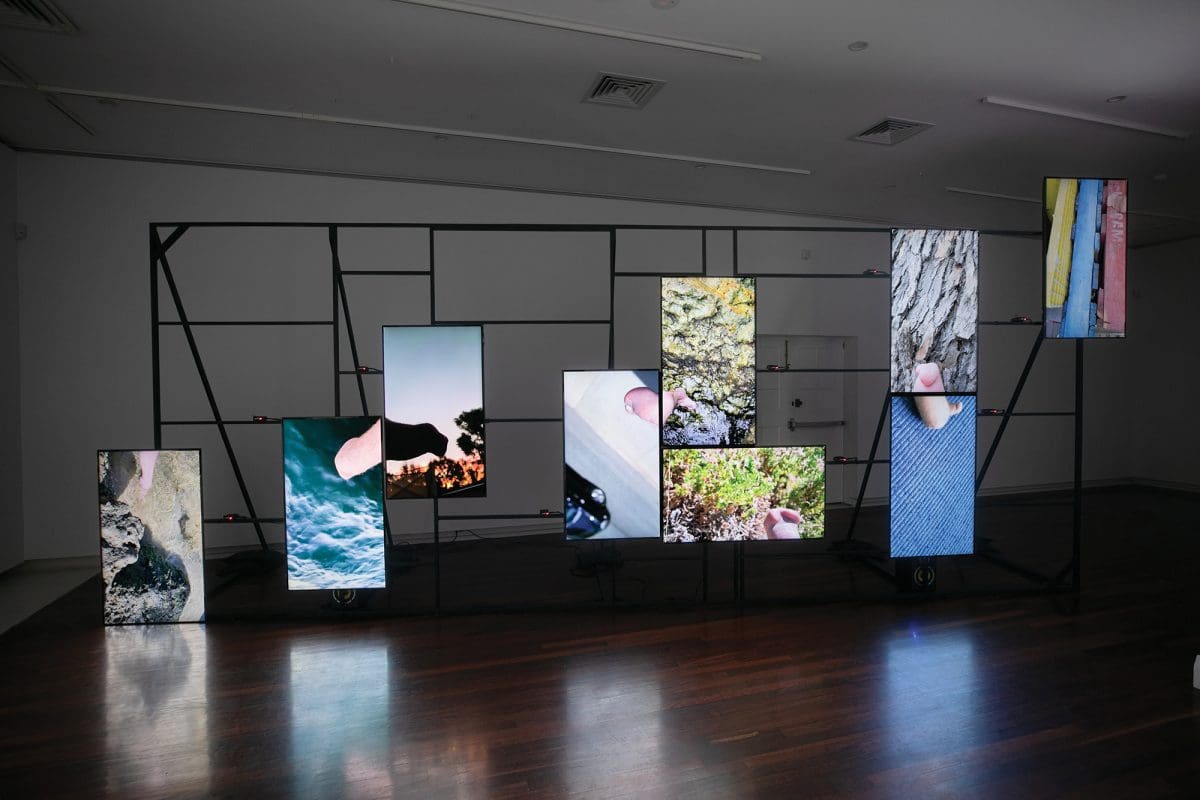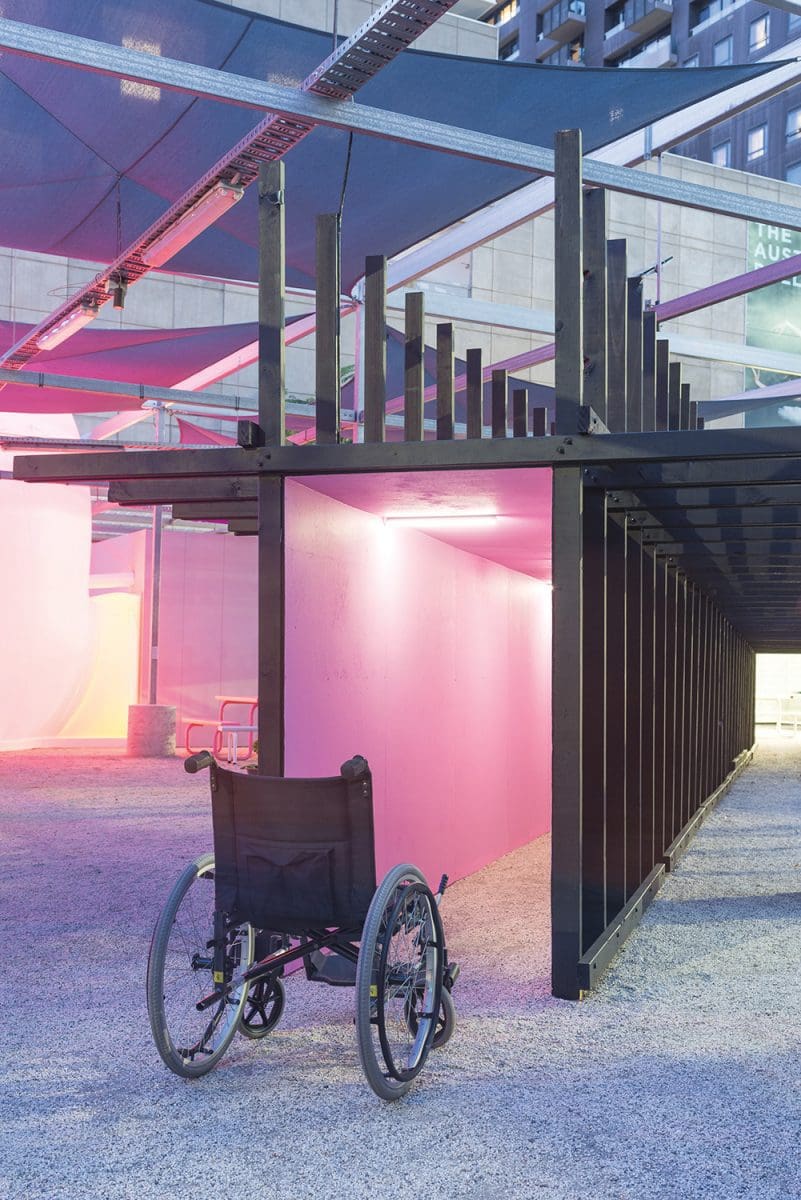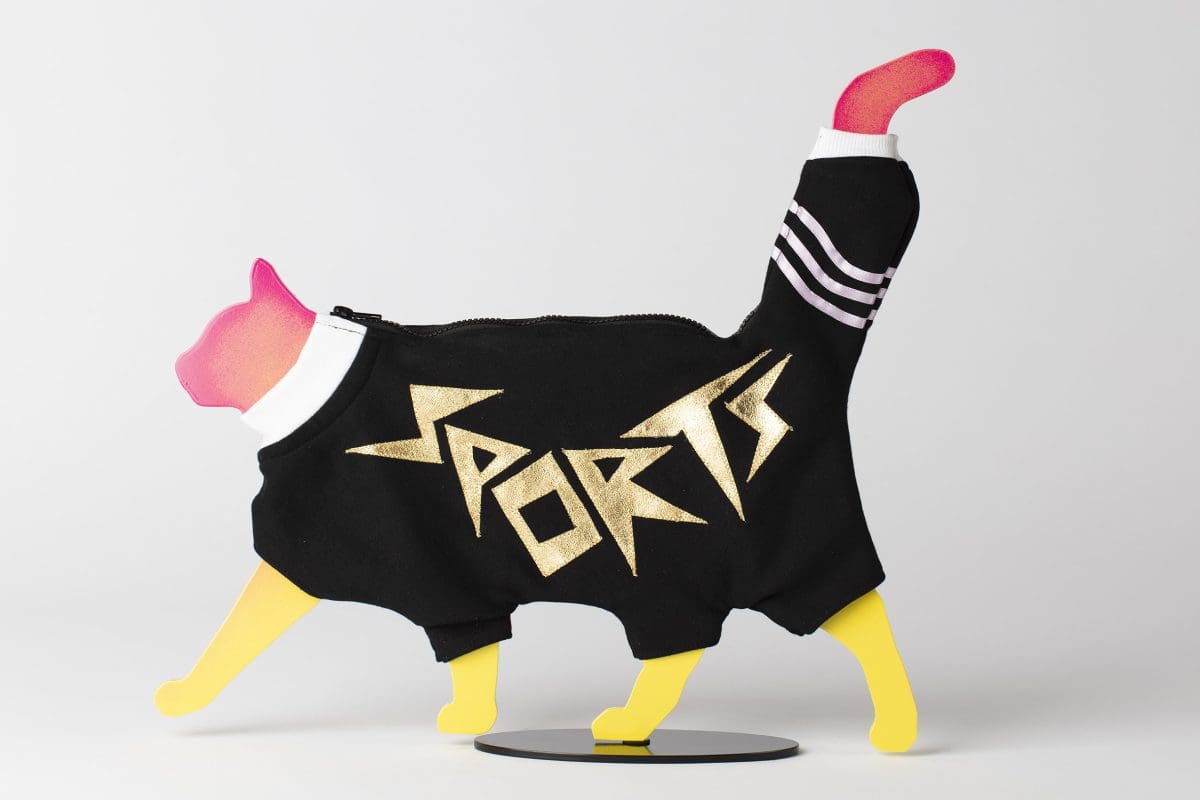
Piercing the veil
A new exhibition at Buxton Contemporary finds a rich complexity in the shadowy terrain between life and death.

Bruno Booth, The elephant in the room, 2019. Digital photo, 4608 x 3456px. Credit: the artist.

Bruno Booth, Tightness x Toughness, 2021, 60mx40mx2m. Pine, formply, fixings, LED lights, programming, wheelchairs, participants. Credit: Duncan Wright.

Bruno Booth, Battlecat, 2021, 650 mm x 300 mm x 300 mm, powder coated aluminium, fleece, silk, zips, steel.

Bruno Booth, And puddles, 2020, Still image from video, 4 mins duration with sound, Photograph: Bo Wong.

Bruno Booth, Body Shots, 2022. 4K, 9 channel, 9 minute video with sound, timber frame, HD panels, Raspberry Pis’, coding, cabling.

Bruno Booth, Hostile Infrastructure, 2019, timber, paint, led lights, Ltech decoder, cables, wheelchair, participant. 23 m x 3 m x 3 m. Photograph: Keelan O’Hehir.

Bruno Booth, Tuesday, 2021, 450 mm x 550 mm x 300 mm, powder coated aluminium, fleece, silk, zip, applique, steel.
Bruno Booth challenges the ableist art world—and the wider world. He has been known to make tunnels that complicate an exhibition goer’s sense of perspective. He has created a colourful clowder of sculptural cats, preening and prowling in leisure wear, circling the Art Gallery of Western Australia (AGWA), acting as ambassadors for the humans who are overlooked in art spaces.
In one solo show in Fremantle, where the UK-born 40-year-old artist now lives, he turned a gallery into an oversized disabled toilet constructed from paper mâché. The toilet itself was plagued by its own fragile temporality, just as real-life rest room facilities for people with disabilities can be thoughtlessly repurposed as storage cupboards.
“That disabled toilet was made in this crappy old studio that I had that was rat infested,” Booth recalls. “Some of the rats had started to eat the paper mâché, so I’d have to rework it and make things again.”
For the Fremantle Biennale in 2021, Booth’s work Tightness Times Toughness invited participants to navigate purpose-built corridors that confounded their spatial judgements, so that they might come off second best when bumping into walls. It inspired The West Australian to call Booth the “artful dodger of the WA modern art scene”.

Booth, who has primarily been using a wheelchair since his teenage years after being born with congenital malformation of the lower limbs, is not so enamoured with that Dickensian appellation, though he does like to call himself a “con artist” rather than a contemporary artist.
“All art is like pulling the wool over people’s eyes just a little bit,” he says. “I’m trying to get messages through to people without being too didactic and too overt with it. I want people to find their own way into a work.”
Humour thus becomes a Trojan horse for deeper meaning. For the AGWA, Booth made the 34 cats for Feline good, HBU? to draw attention to how the height of gallery hangs is not always ideal for people with mobility issues. The piece also broke Booth’s run of works that he says had become “bogged down” in seriousness in the preceding years.
Booth would prefer people excise one well-worn word, however. “The word ‘disability’—I don’t like to use that much. I prefer ‘disenabling’,” he says. “If you think of someone that’s ‘disenabled’, they’re basically not given the same access to opportunities as [other groups such as] people of colour, LGBTQI+ people. That’s a massive group.”
As one of six invited finalists for the 2022 John Stringer Prize, an annual merit for contemporary Western Australian artists named after the late, influential curator, Booth is now broadening his artistic concerns beyond his own experiences as a disenabled person to the increasing number of people with disabilities—or disenabilities—as they age.
The three-part work includes a sculpture called Always Room for One More on a Sinking Ship, and it consists of a wheelchair cut in half and stretched from a single seat to a bench seat. Designed for many to use, it’s also angled in a way that it appears to be sinking into the floor. The seat will be embroidered with subversive messaging.
Booth used prosthetic legs from the age of 18 months until adolescence but stopped using them when he started high school because they were so uncomfortable. “I just didn’t gel with them,” he says. “It was like wearing really uncomfortable clothing all the time. I found that using a chair, I was a lot more mobile.
“I don’t have any spinal injuries; it’s just basically my legs are formed differently to other people’s, so it felt a bit strange having to wear something to fit in. I didn’t really feel like I needed to do that.”
Earlier in his career, Booth would make “nice, pretty paintings”, but would baulk when people would ask what his art was about: “I just had nothing to say, because I was just making them for the joy of painting.”
Booth had spent many years thinking of himself as “not disabled” and was not part of any disability community. It was only three years ago that Booth could finally call himself an artist “without cringing”, coinciding with the time he began to “engage critically with what it meant to be categorised as disabled”.
Booth came to a critical juncture when the West Australian artist Abdul-Rahman Abdullah, an informal mentor, said to him: “Great artists tell stories in the work, and you’ve got an inbuilt story to tell that people want to hear.”
Abdullah’s words were a lightbulb moment for Booth. “I started to make work about my experience with disability. Since I’ve done that, it’s really resonated with people. People are interested in what I want to say, and how I want to say it.”
John Stringer Prize 2022
John Curtin Gallery (Perth WA)
7 October—4 December
Out of Order
Granville Centre Art Gallery (Sydney NSW)
6 September—10 December
This article was originally published in the September/October 2022 print edition of Art Guide Australia.